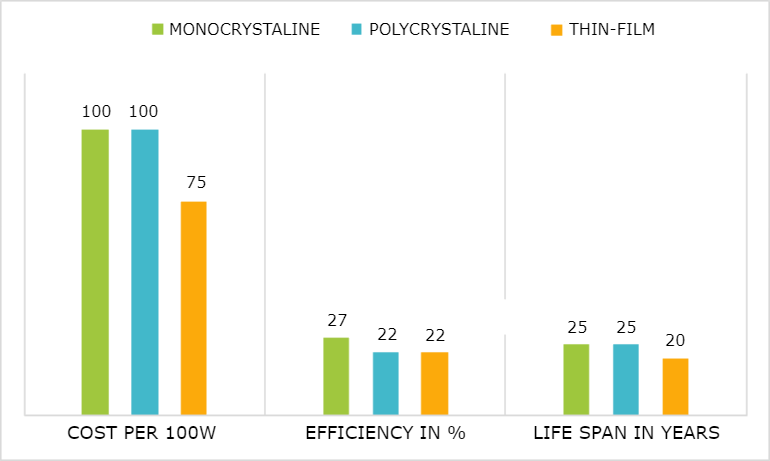Introduction:
Solar panel efficiency Over Time plays a crucial role in determining the effectiveness and performance of solar power systems. Over the years, significant advancements have been made in enhancing the efficiency of solar panels, resulting in improved energy output and increased economic viability. In this article, we delve into the concept of solar panel efficiency and explore how it has evolved over time, highlighting the factors contributing to these advancements.
1. Explaining Solar Panel Efficiency:
The capacity of a photovoltaic (PV) panel to transform sunlight into usable power is referred to as solar panel efficiency. The amount of sunlight that is successfully transformed into electrical energy serves as the indicator. The output of solar power systems is maximized by higher efficiency, which results in increased energy generation from the same quantity of sunshine.
2. Historical Perspective:
Efficiency levels were comparatively low in the early days of solar panel technology, usually falling between 5% and 10%. The primary materials used in these early solar panels were monocrystalline or polycrystalline silicon, both of which had inherent limits in their ability to convert sunlight into power. However, solar panel efficiency has significantly increased because of advances in research and development.
3. Factors Influencing Solar Panel Efficiency:
Several factors contribute to the efficiency of solar panels, including:
a. Cell Technology: The efficiency of various cell technologies, such as monocrystalline, polycrystalline, and thin-film, varies. Monocrystalline cells, which are noted for their better purity and homogeneity, are often more efficient than other varieties.
b. Materials and Manufacturing Techniques: The materials and manufacturing techniques used in the production of solar panels have a considerable influence on efficiency. The goal of the research is to improve light absorption, reduce energy loss, and improve charge carrier movement inside cells.
c. Anti-Reflective Coatings: By reducing light reflection and maximizing light absorption, anti-reflective coatings placed on the surface of solar panels assist increase overall efficiency.
d. Cell Design and Structure: Cell design advancements such as back contact or passivated emitter rear contact (PERC) technologies have enhanced electron capture and decreased energy loss, leading to better efficiency levels.
e. Temperature and Environmental Factors: Temperature and environmental factors can have an impact on the efficiency of solar panels. The need of efficient panel cooling and ventilation is highlighted by the possibility that excessive temperatures will result in a modest drop in efficiency.
4. Efficiency Milestones:
There have been notable advancements in efficiency in the solar industry:
a. First-generation solar cells: In the 1950s and 1960s, early silicon-based solar cells had efficiency between 5% and 10%.
b. Second-Generation Solar Cells: Efficiency increased with the development of thin-film solar cells, such as amorphous silicon and cadmium telluride (CdTe), reaching values of 10% to 15% in the 1980s and 1990s.
c. Third-Generation Solar Cells: Recent developments have sparked the creation of cutting-edge products including tandem solar cells, perovskite solar cells, and multi-junction solar cells. The potential for these technologies to transcend 20% and get close to 30% in efficiency is encouraging.
5. Current Efficiency Levels:
Commercial solar panels nowadays generally attain efficiencies between 15% and 22% using monocrystalline and polycrystalline silicon technology. The efficiency of high-end monocrystalline panels can reach up to 25%. Despite having lower efficiency levels, thin-film technologies are nonetheless employed in some applications because of their adaptability and cheaper manufacturing costs.
6. Future Trends and Prospects:
As a result of continued research and development activities, the search for improved solar panel efficiency continues. To further increase effectiveness, scientists and engineers are investigating cutting-edge materials like perovskites and quantum dots as well as innovative cell topologies. Furthermore, cutting-edge methods like tandem solar cells, which mix several materials with complimentary absorption characteristics, have the potential to achieve efficiencies beyond 30%.
7. Practical Implications:
Significant practical ramifications of solar energy’ higher efficiency. Solar power systems become more compact and economical as efficiency increases since less solar energy is needed to produce a given amount of electricity. Improved performance is also made possible by increased efficiency in locations with constrained space or poor lighting.
8. Economic Considerations:
The economics of solar electricity have been positively affected by the ongoing development in solar panel efficiency. Increased energy generation from higher efficiency shortens the payback period for solar systems and boosts return on investment. As a result, solar energy is now more economically viable than conventional energy sources.
Conclusion:
The effectiveness of solar panels has changed dramatically over time as a result of technical and scientific advances. Solar energy is becoming a practical and appealing source of sustainable energy due to higher efficiency levels. We may anticipate more advancements in solar panel efficiency as research goes on, which will ultimately advance the broad acceptance of solar energy as a dependable and sustainable energy supply.






